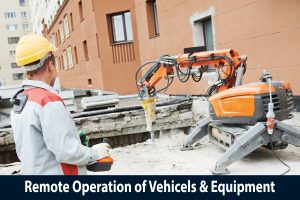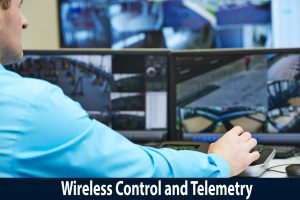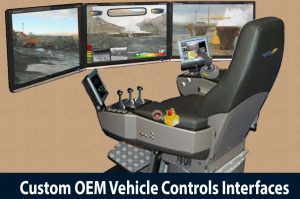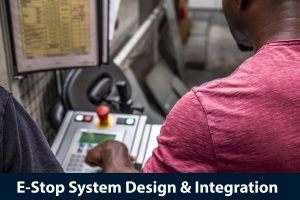Equipping a vehicle or other equipment for tele-operation makes it possible to use the equipment in hazardous conditions while the human operator remains at a safe and remote location. MARLEX Engineering Inc. will facilitate the custom retrofit of a vehicle to integrate all the components and systems required to support the option of tele-operation.
In addition we will design the operator control station from which the vehicle can be remotely controlled, the command and telemetry data link between the vehicle and the remote control station, and the required safety emergency stop (E-Stop) system.
Remote Operation Of Vehicles & Equipment
Adding tele-operation capabilities to a vehicle or other piece of equipment makes it possible for the operator drive and control the equipment from a remote location. Removing the operator from the equipment has a significant safety advantage in that it allows the equipment to be used in unsafe locations or to perform dangerous work while human operators are kept out of harm’s way.

Examples include operating earth-moving equipment on unstable ground or near a cliff, or using equipment to transport a dangerous payload such as molten slag. Remote control over the vehicle can be achieved through line-of-site if the distance between the operator and the equipment is small. Alternatively, cameras and other sensors on the vehicle may be used to provide the feedback required to control the vehicle from much greater distances away.
Equipment that is capable of tele-operation can be further upgraded to support autonomous operation, where all or part of the equipment’s operation is performed by a computer. This is useful for performing monotonous or repetitive tasks or for the automated transport of dangerous goods and materials.
Tele-operation or autonomous operation capabilities can be installed on many different types of vehicles and equipment ranging from ground vehicles (ATVs, Passenger vehicles, heavy earth-moving machines, equipment designed for manipulating and carrying a payload) to both fixed and rotary wing aerial vehicles.
MARLEX Engineering Inc. will supply the expertise to facilitate a custom retrofit of a vehicle with the components and systems required to allow all or a selection of the vehicle functions to be operated remotely. The original (non-remote) capabilities of the vehicle are maintained.
Wireless Control And Telemetry
Tele-operation of a vehicle requires an operator control station from which the operator can remotely direct the movement and functions of the vehicle. The operator control station will normally be equipped with displays and video monitors that show the operator information about the vehicle and its surroundings. Command and telemetry data streams carry information between the control station and the vehicle. The content of the command and data streams as well as the controls and displays in the control station are determined by the capabilities of the vehicle that is being tele-operated.
In retrofitting a vehicle for tele-operation MARLEX Engineering Inc. provides expertise in: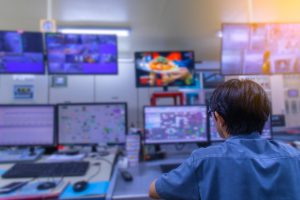
- Designing the controls, displays and layout of the operator control station from which the operator will remotely control the vehicle.
- Including haptic feedback to the operator controls.
- Creating and selecting command messages that are used to direct the motion of the vehicle, operate its systems and articulators and for manipulating any payloads.
- Creating and selecting telemetry messages for monitoring the status of the vehicle and its systems such as position, speed, engine parameters, articulator and payload positions etc.
- Implement high-definition, low latency wireless video feeds from cameras installed on the vehicle.
- Applying image stabilization technologies to video feeds where vibration and shaking of the vehicle warrant this.
- Including specialized vision equipment such as IR and near-IR cameras to augment other camera images to, for example, aid in seeing through steam and fog.
- Incorporating system “watchdog” and “heartbeat” functions to ensure that delays or lapses in the data streams are detected and dealt with.
Custom OEM Vehicle Controls Interfaces
Adding tele-operation capabilities to any vehicle normally involves retrofitting the vehicle with additional equipment and systems. Details of the retrofit are determined by the type of vehicle as well as the types of control and feedback that will be made available to the remote operator.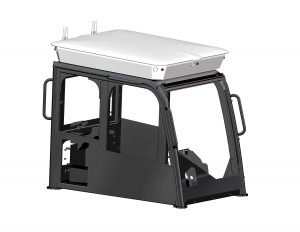
MARLEX Engineering provides the technical expertise to outfit a vehicle with additional equipment and systems such as:
- Actuators to provide steering and throttle control.
- Additional sensors needed to measure orientation of the vehicle (pitch, roll, yaw), steering position, the positions of various articulator joints, payload properties like weight etc.
- Equipment and systems for obtaining navigation information such as GPS data.
- Communications equipment to provide the wireless link between the vehicle and the operator control station.
- Cameras to provide the remote operator with visual feedback of the environment around the vehicle and its payload for enhanced situational awareness.
- Obstacle detection systems.
If custom interfaces to OEM vehicle controls are required we will design and develop the necessary hardware and software. For example we have created a throttle control interface for a Caterpillar® Engine Control Unit (ECU).
Retrofitting a vehicle for tele-operation does not affect the normal operation of the vehicle; it can still be controlled by an operator inside the vehicle when required.
E-stop System Design & Integration
A critical safety component of any equipment that is operated remotely or autonomously is the Emergency Stop or “E-Stop” system.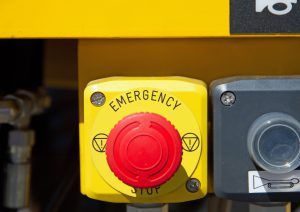
MARLEX Engineering Inc. will design an effective E-Stop system for a specific tele-operation solution. This includes selecting the type and placement of manually operated E-Stop buttons in the vehicle, on the exterior of the vehicle, around the work area of the vehicle and at the remote operator control station. It also includes components and software to automatically produce an E-Stop condition if a watchdog timer fails, a “heartbeat” event is missing or on detection of a critical system fault. We also incorporate a separate, dedicated communications channel for relaying E-Stop information to the vehicle.
If required we can design custom components that are needed to improve the reliability of the E-Stop mechanism. For example, we have designed an external watchdog component that can trigger an E-Stop event if it detects that the software in the vehicle’s embedded controller is not functioning normally.


